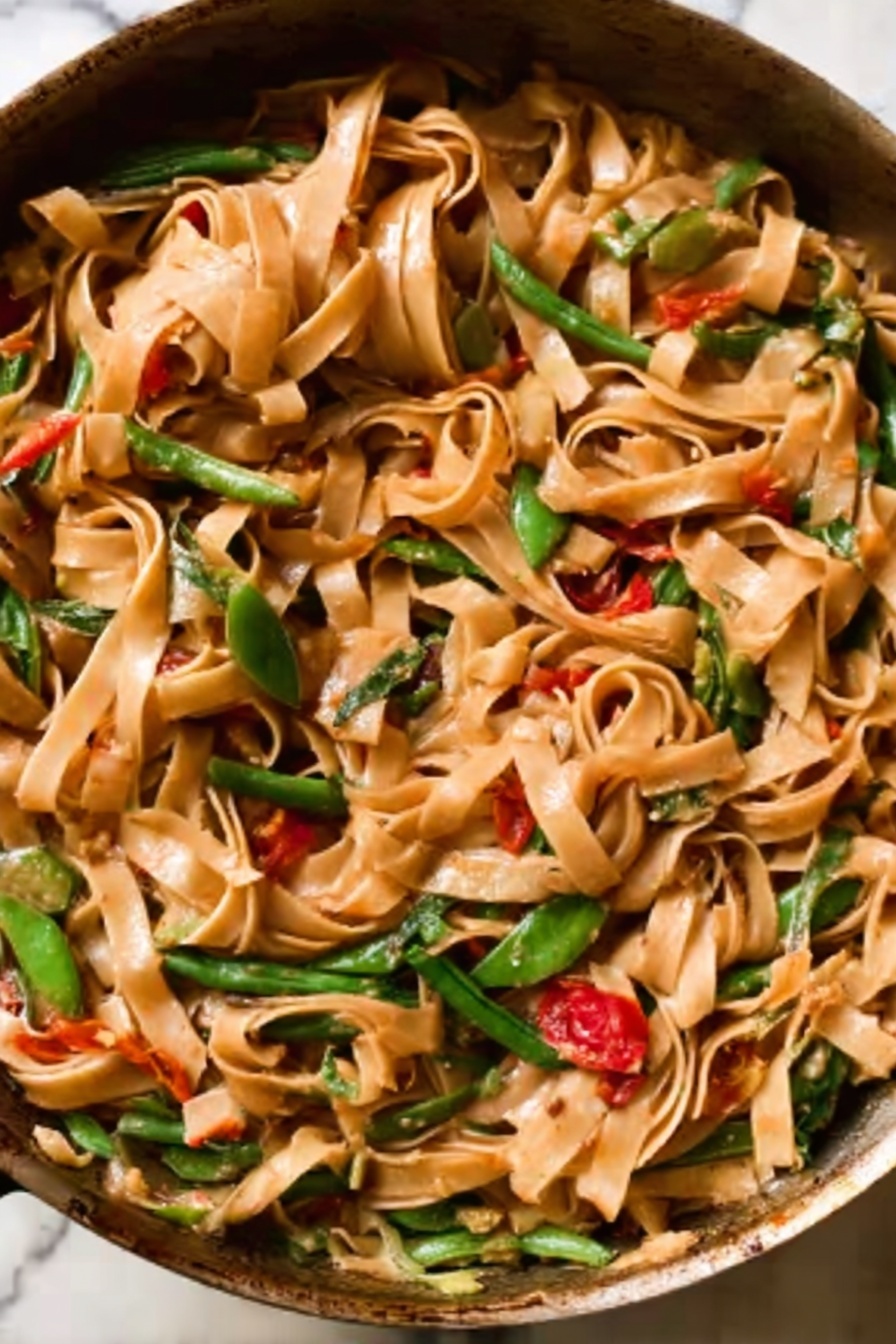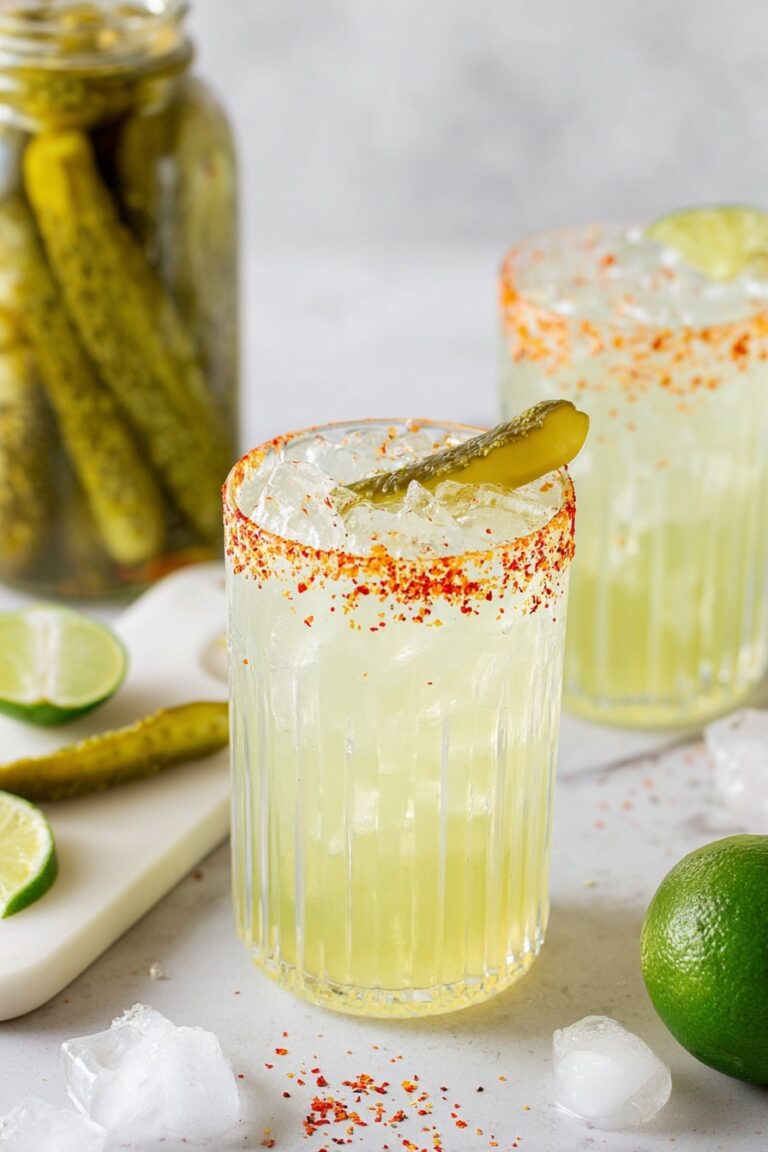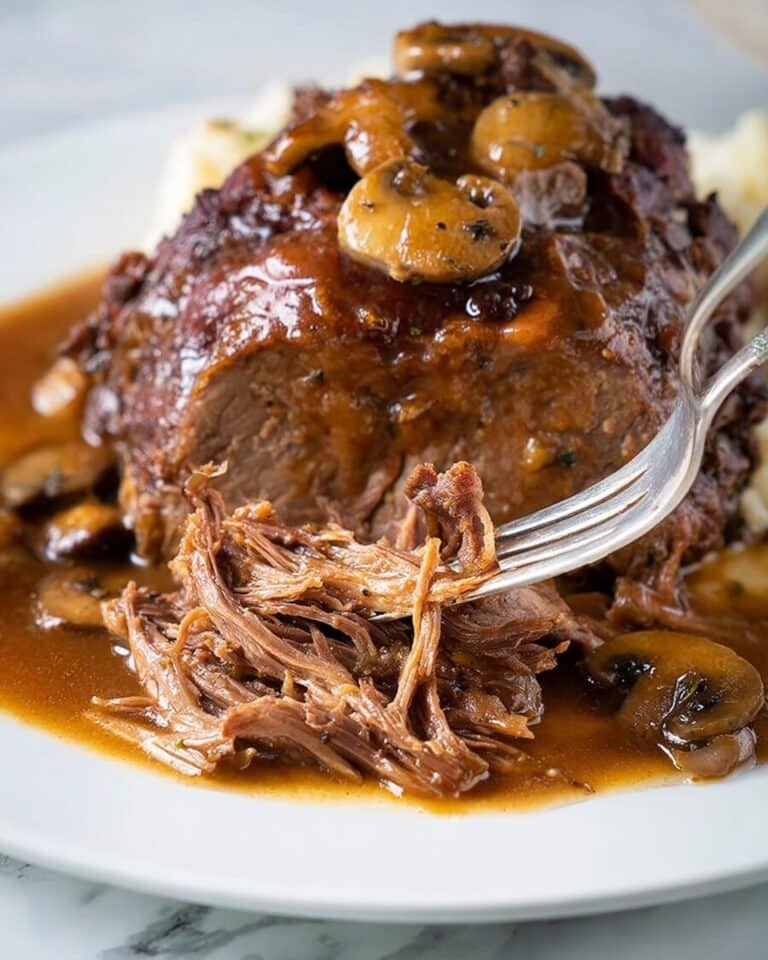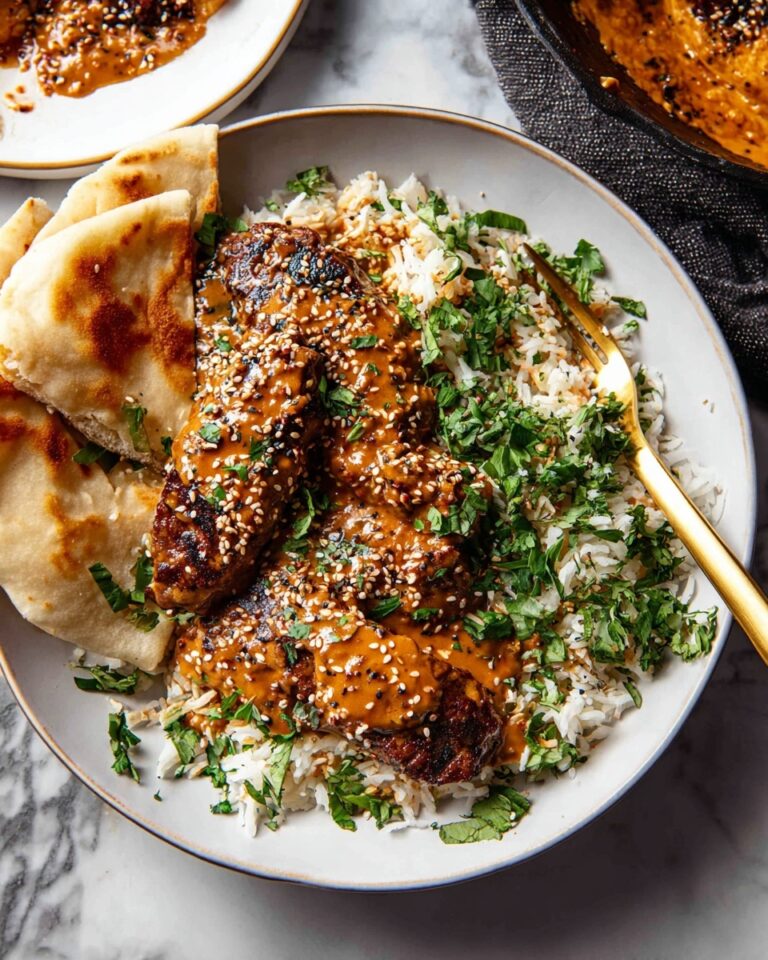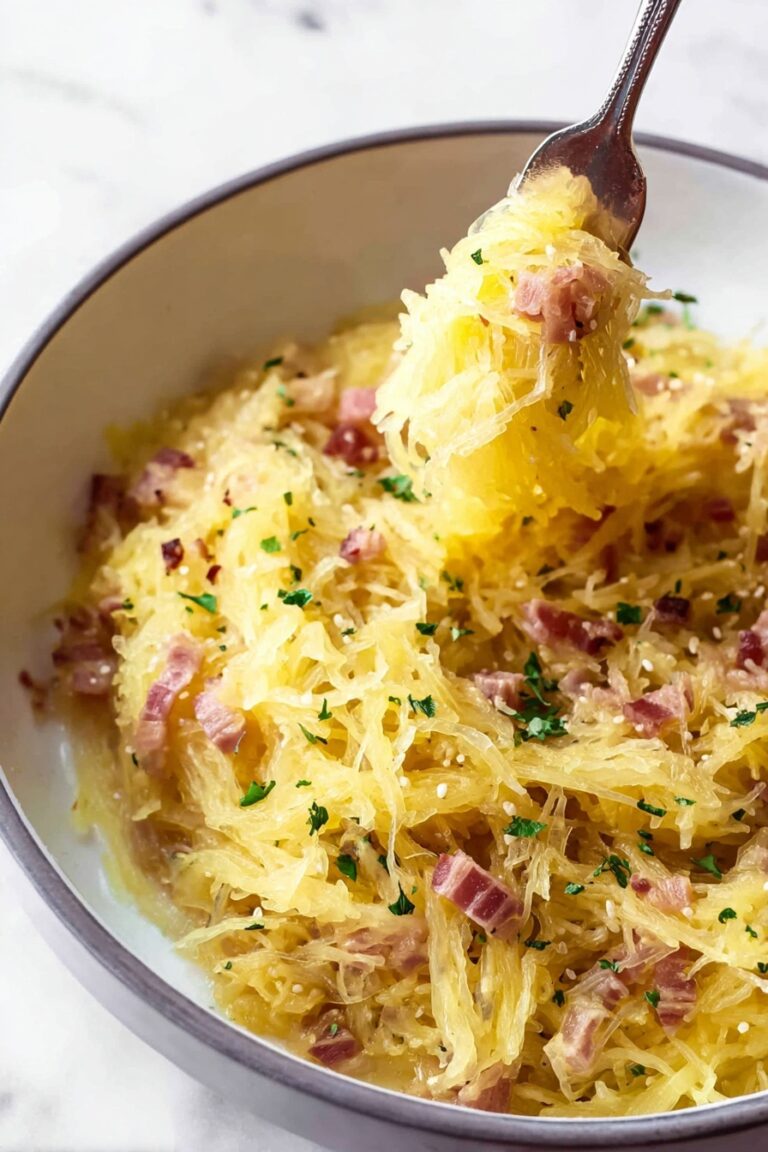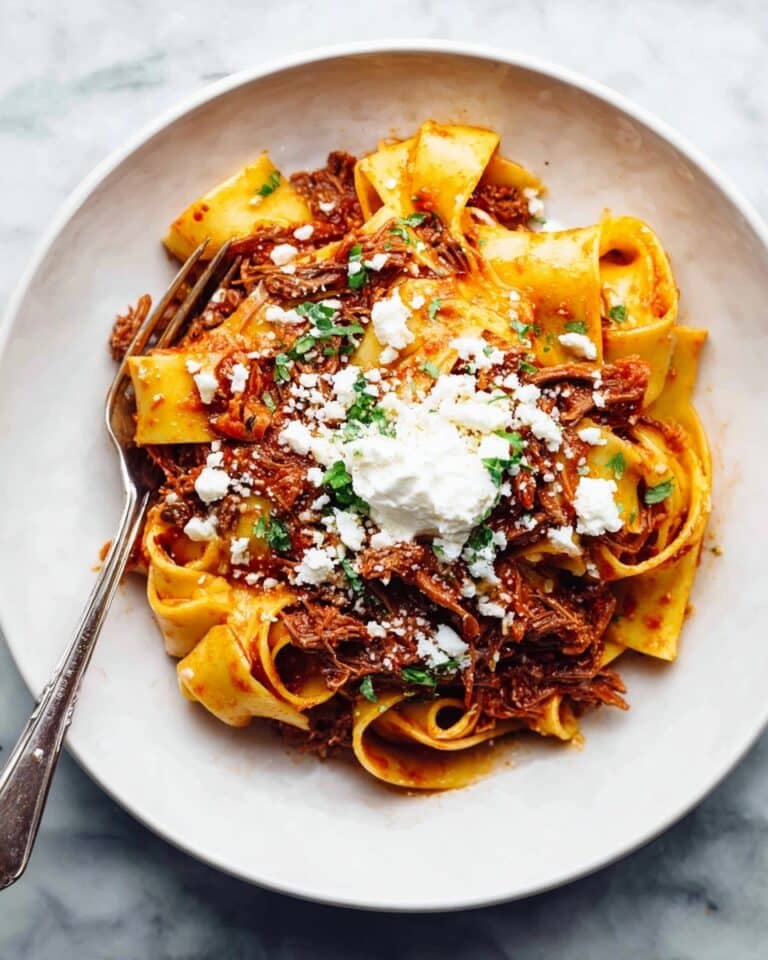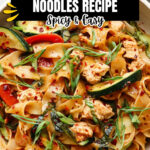Drunken Noodles Recipe
If you’re craving a dish that’s bursting with bold flavors and quick to whip up, you’re in the right place. This Drunken Noodles Recipe is one of those magical meals I keep coming back to—it’s spicy, savory, and just downright satisfying. Trust me, once you try it, you’ll wonder how you ever lived without it in your weeknight rotation.
Why This Recipe Works
- Speedy Prep: The recipe comes together quickly, perfect for busy nights.
- Flavor Balance: A harmonious mix of umami, sweetness, and spice makes every bite exciting.
- Versatile Protein: You can easily swap chicken with shrimp, tofu, or even beef, tailoring it to your taste.
- Fresh Herbs: Thai holy basil adds a unique aroma that truly elevates the dish.
Ingredients & Why They Work
Each ingredient in this Drunken Noodles Recipe plays a part in giving you that vibrant, authentic Thai street food experience at home. Picking quality produce and condiments really makes a difference, so here’s a quick rundown of what you’ll want to look for and why these work so well.
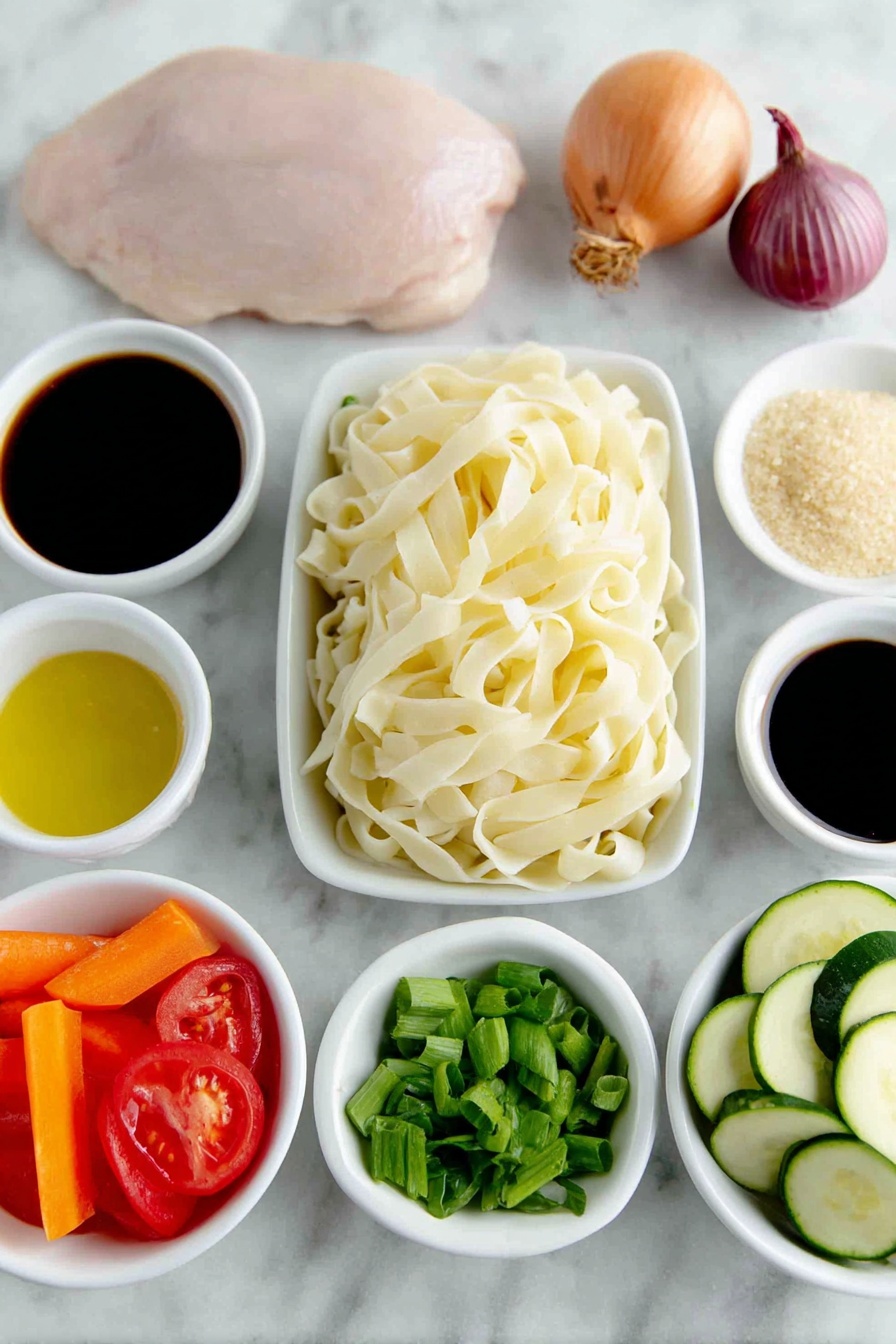
- Wide rice noodles: These noodles soak up the sauce perfectly—they’re the foundation that carries all those flavors.
- Sesame oil: Adds a subtle nuttiness; you can use canola if you prefer a more neutral oil.
- Shallots: Milder than onions, they bring a touch of sweetness and depth.
- Carrots: Add crunch and natural sweetness, balancing the heat.
- Chicken breast: Lean and quick to cook; shrimp or tofu are great swaps for variety.
- Garlic: Fresh, minced garlic is a must for that punchy, aromatic kick.
- Ginger: Just a touch brightens and adds warmth.
- Zucchini: Soaks up sauce while keeping veggies light and fresh.
- Green bell pepper: Adds color and a mild, crisp sweetness.
- Green onions: Used both cooked and raw for layers of flavor.
- Roma tomatoes: Juicy acidity to cut through the rich sauce.
- Thai Holy Basil leaves: Aromatic and spicy, this herb is the star—but regular basil works in a pinch.
- Oyster sauce: The umami powerhouse that gives the dish a savory backbone.
- Soy sauce (low sodium): Balances the oyster sauce without overwhelming saltiness.
- Fish sauce: Adds salty depth and that unmistakable Thai flavor.
- Brown sugar: Rounds out the saltiness with a hint of sweetness.
- Water: Helps loosen the sauce for perfect coating.
- Thai red chili paste: Adjust the heat here—it’s where you control the spicy vibe.
Make It Your Way
I love how customizable this Drunken Noodles Recipe is. Over the years, I’ve tinkered with it depending on what’s in my fridge or my mood—sometimes dialing up the spice, other times making it extra veggie-packed. Don’t be shy to make it truly yours!
- Protein swap: I’ve found that shrimp cooks so fast and adds a lovely sweetness—great when you’re short on time.
- Vegetarian version: Use tofu and double up on the veggies, plus swap fish sauce with tamari or soy sauce to keep it vegan.
- Heat level: If you’re a spice lover like me, adding extra red chili paste or fresh chopped chilies kicks things up delightfully.
- Seasonal tweaking: Tried it with snap peas and baby corn during spring, which gave great crunch and color contrast.
Step-by-Step: How I Make Drunken Noodles Recipe
Step 1: Prep Your Noodles and Sauce
I always start by cooking the wide rice noodles according to the package instructions—usually soaking them in hot water until they’re tender but still a bit firm. While that’s happening, I whisk together the sauce in a small bowl. Mixing oyster sauce, soy sauce, fish sauce, brown sugar, water, and chili paste ahead saves tons of time and helps the flavors meld better later on.
Step 2: Sauté the Aromatics and Veggies
Heat 1 tablespoon of sesame oil over high heat in your wok or skillet, then toss in the chopped shallots and thin carrot slices. This starts building your flavor base early. Cook for about 2 minutes until they soften a bit, then add the second tablespoon of oil before adding the chicken. Don’t overcrowd the pan—give your meat room to brown nicely. Season lightly with pepper and cook until no longer pink. That’s the trick to juicy chicken without it drying out.
Step 3: Layer in Garlic, Ginger, and Remaining Veggies
Throw in the minced garlic and ginger—watch closely and stir constantly since they can burn fast. After about 10 seconds, toss in the sliced bell pepper, zucchini, tomatoes, and the white parts of those green onions. Sauté for 2 minutes, aiming to keep the veggies crisp-tender for that perfect texture balance.
Step 4: Combine Noodles and Sauce, Finish with Basil
Add your cooked noodles to the skillet and pour over the sauce you prepared earlier. Toss everything together and stir-fry for a few minutes so the noodles soak up all that amazing flavor and heat through evenly. When you’re happy with how saucy and cooked it looks, take it off the heat and gently fold in the chopped Thai holy basil—this herb’s aroma is the crowning glory of drunken noodles.
Step 5: Serve and Garnish
Dish it out immediately, garnished with the remaining green onion greens and a little extra chili sauce or sriracha if you like a spicy punch. Pro tip: serving this hot off the stove keeps the noodles from getting soggy, so plan to eat right away for peak flavor.
Tips from My Kitchen
- Don’t Overcook Noodles: Keep noodles slightly firm during prep; they’ll finish cooking in the pan and won’t get mushy.
- High Heat Is Key: A hot wok or pan ensures quick cooking and great caramelization.
- Layer Flavors Carefully: Add aromatics first, then protein, then vegetables—this sequencing locks in flavor and texture.
- Use Fresh Basil: Adding it off the heat keeps its fragrance bright and fresh.
How to Serve Drunken Noodles Recipe
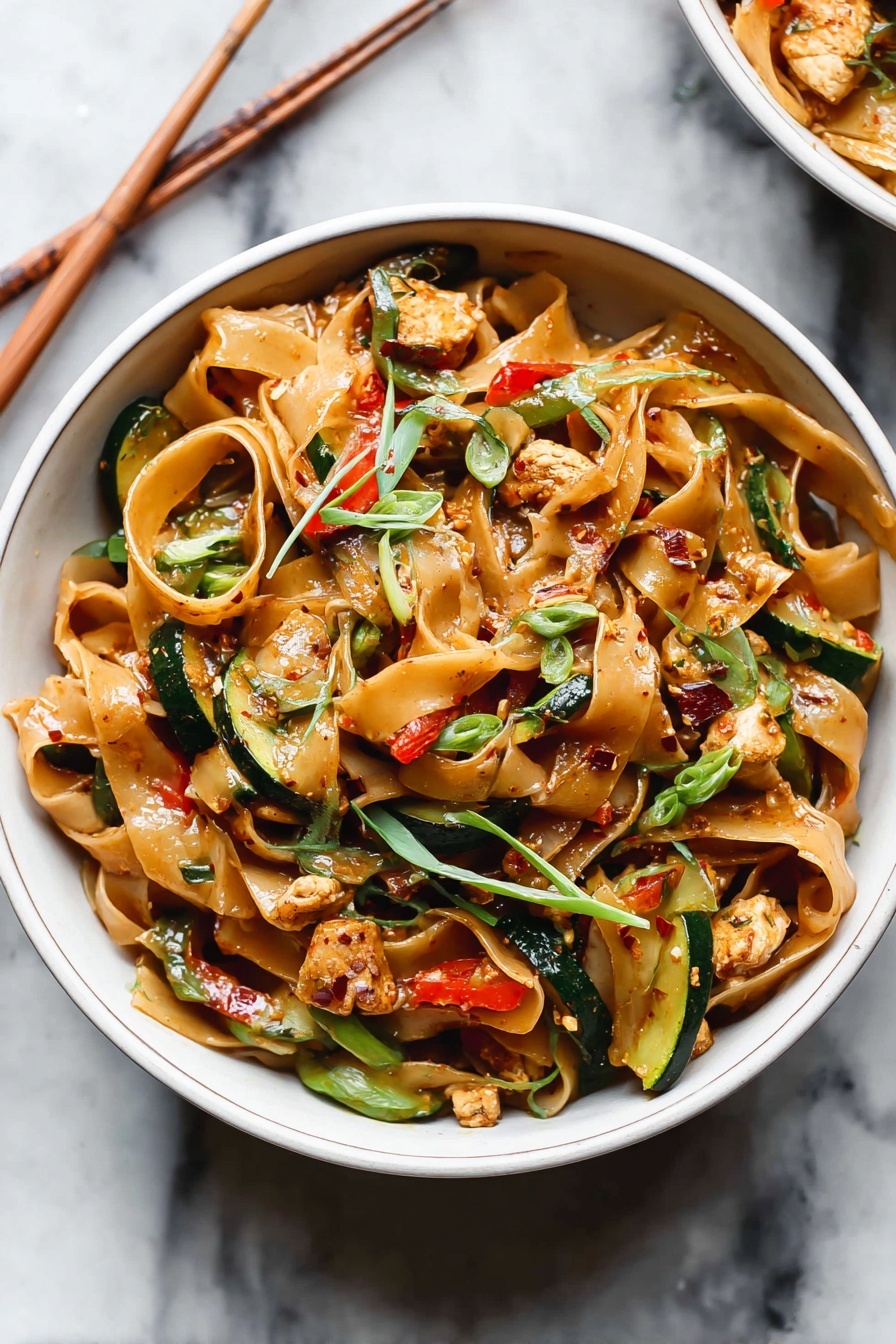
Garnishes
I like to sprinkle chopped green onions on top and serve with extra Thai basil leaves for an herbal punch. A wedge of lime on the side adds a burst of freshness when squeezed. Sometimes, I drizzle a little more chili paste or sriracha for those who crave extra heat. These little touches bring the dish to life and let everyone tailor their bowl exactly how they like it.
Side Dishes
Your Drunken Noodles make a fantastic main event, but pairing them with a simple cucumber salad or some steamed jasmine rice can round out the meal nicely. For something heartier, try pairing with crispy spring rolls or an Asian-style slaw for contrast. It’s a pretty flexible dish, though—you’ll find it’s filling and flavorful enough to stand on its own too!
Creative Ways to Present
Once, I served my Drunken Noodles in charming little coconut bowls at a casual dinner party—it was such a hit! You could also plate with edible flowers or scatter freshly chopped chilies for a colorful pop. I like to keep it rustic and fun, tossing everything together family-style right at the table so everyone can help themselves.
Make Ahead and Storage
Storing Leftovers
Leftover Drunken Noodles store well in an airtight container in the fridge for up to 3 days. I recommend letting it cool before sealing so the noodles don’t get too soggy. When you’re ready to eat, toss gently to loosen any clumps.
Freezing
I’ve frozen leftover drunken noodles once or twice, but honestly, the texture of the noodles changes a bit after thawing. If you want to freeze it, separate the noodles and sauce/protein beforehand to help preserve texture, then reheat and combine.
Reheating
For best results, reheat leftovers in a hot skillet with a splash of water or oil to revive the noodles and keep everything from drying out. Microwaving works too but watch the timing to avoid overcooking. Fresh herbs are best added after reheating to keep their bright flavor.
FAQs
-
Can I make this Drunken Noodles Recipe vegetarian or vegan?
Absolutely! Swap out the chicken for firm tofu or extra vegetables, and replace fish sauce with soy sauce or tamari to keep it vegan-friendly. The sauce will still pack plenty of flavor!
-
What’s the best noodle to use for Drunken Noodles?
Wide rice noodles are ideal because their flat shape holds the sauce well and they cook quickly. If you can’t find fresh ones, dried wide rice noodles work great—just soak or boil them according to package instructions.
-
How spicy is this Drunken Noodles Recipe?
The heat level is totally adjustable. The recipe calls for Thai red chili paste, but you can start with less and add more to taste. I usually add extra sriracha at the table so everyone can customize their spice.
-
What is Thai Holy Basil, and can I substitute it?
Thai Holy Basil has a distinct peppery, slightly spicy flavor that shines in drunken noodles. If you can’t find it, regular sweet basil is a fine substitute, though the flavor won’t be quite the same.
Final Thoughts
This Drunken Noodles Recipe holds a special place in my kitchen because it’s one of those meals that feels authentically Thai yet so accessible to make anytime. It’s quick, adaptable, and ridiculously delicious—a combo that’s hard to beat. I hope you have as much fun cooking and eating it as I do. Seriously, give it a go and watch it become a favorite in your house too!
Print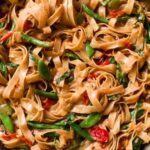
Drunken Noodles Recipe
- Prep Time: 15 minutes
- Cook Time: 15 minutes
- Total Time: 30 minutes
- Yield: 4 servings
- Category: Main Course
- Method: Stovetop
- Cuisine: Thai
Description
Drunken Noodles is a popular Thai stir-fried noodle dish featuring wide rice noodles tossed with a savory and spicy sauce, fresh vegetables, chicken, and aromatic Thai basil. This flavorful meal comes together quickly for a satisfying dinner with a balance of textures and bold flavors.
Ingredients
Noodles and Protein
- 8 oz wide rice noodles
- 1 large chicken breast, chopped (or shrimp or tofu)
Vegetables and Aromatics
- 2 Tbsp sesame oil (or canola oil)
- 2 shallots, chopped
- 2 carrots, thinly sliced
- 3 large cloves of garlic, minced
- ½ teaspoon fresh minced ginger
- 1 zucchini, thinly sliced
- 1 green bell pepper, thinly sliced
- 2 green onions, chopped (separate whites and greens)
- 1 roma tomato, sliced
- 1 cup fresh Thai Holy Basil leaves (or substitute regular basil), roughly chopped
Sauce
- 3 Tbsp oyster sauce
- 1/3 cup low sodium soy sauce
- 2 teaspoons fish sauce
- 2 teaspoons brown sugar
- 2 Tbsp water
- 1 teaspoon Thai red chili paste (or substitute sriracha or crushed red pepper flakes), adjust to taste
Instructions
- Prepare noodles: Cook the wide rice noodles according to the package instructions until tender. Drain and set aside.
- Make the sauce: In a small bowl, combine oyster sauce, low sodium soy sauce, fish sauce, brown sugar, water, and Thai red chili paste. Stir well and set aside.
- Cook vegetables and chicken: Heat 1 tablespoon of oil in a wok or large skillet over high heat. Add chopped shallots and thinly sliced carrots, cooking for 2 minutes until slightly softened.
- Add chicken and aromatics: Add another tablespoon of oil to the pan. Add the chopped chicken breast and season with pepper. Cook until the chicken is cooked through. Then add minced garlic and minced ginger; sauté for 10 seconds until fragrant.
- Add remaining vegetables: Add thinly sliced green bell pepper, zucchini, sliced roma tomato, and the white parts of the chopped green onions. Cook for 2 minutes, stirring frequently.
- Toss noodles and sauce: Add the cooked noodles to the pan and pour the prepared sauce over everything. Toss well to combine and cook for a few more minutes until the noodles are heated through and coated with sauce.
- Add basil and finish: Remove the pan from heat and stir in the roughly chopped Thai Holy Basil leaves. Garnish with the remaining green onion greens and serve immediately.
- Optional spice: Serve with extra chili sauce, sriracha, or crushed red pepper flakes for added heat.
Notes
- Substitute shrimp or tofu for chicken to make it pescatarian or vegetarian respectively.
- If Thai Holy Basil is unavailable, regular sweet basil can be used but the flavor will be milder.
- Adjust the amount of chili paste or sriracha to control the spice level.
- Use low sodium soy sauce to keep sodium levels moderate.
- For a gluten-free version, ensure oyster sauce and soy sauce are gluten-free or substitute with tamari.
Nutrition
- Serving Size: 1 serving
- Calories: 450 kcal
- Sugar: 6 g
- Sodium: 800 mg
- Fat: 15 g
- Saturated Fat: 2.5 g
- Unsaturated Fat: 10 g
- Trans Fat: 0 g
- Carbohydrates: 55 g
- Fiber: 4 g
- Protein: 30 g
- Cholesterol: 70 mg

